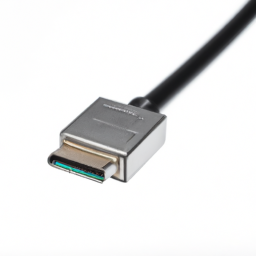Unveiling the Hidden Gems of DisplayPort: Unlocking the Future of Video Connectivity
Unraveling the Mysteries of DisplayPort: A further Evolution of Video Connectivity

In the realm of video connectivity, DisplayPort often takes a backseat to more well-known options like VGA, DVI, and HDMI. Many people assume that DisplayPort is just another variation of these existing standards, but in reality, it represents something entirely new and different. This article aims to shed light on the unique features and advantages of DisplayPort, providing readers with valuable insight into this often overlooked technology.
The article begins by highlighting one crucial difference between DisplayPort and its counterparts – the way it sends data. While VGA, DVI, and HDMI transmit video signals continuously, DisplayPort breaks data down into packets. This distinction may seem insignificant, but it has important implications for the performance and capabilities of DisplayPort.
The author goes on to discuss their personal experience with DisplayPort cables, revealing a common issue faced by users - the lack of enforcement and quality control. With so many cable manufacturers flooding the market, it becomes difficult for consumers to discern which cables will provide reliable performance. This problem stems from DisplayPort’s open standard, which allows for numerous, potentially subpar cable options. In contrast, HDMI’s high licensing fee acts as a barrier to entry for unscrupulous manufacturers, ultimately benefiting consumers.
Furthermore, the article delves into the concept of multi-stream (MST) on DisplayPort. It explains how this feature could be used to achieve resolutions and refresh rates that were not initially defined standards. For instance, the author recounts how early 4K/60Hz monitors utilized DP 1.4 or 1.2 to send two signals to cover different portions of the screen, effectively creating a seamless 3840x2160/60Hz display. This highlights the flexibility and adaptability of DisplayPort, which can accommodate emerging display technologies.
However, the article also addresses the challenges posed by unreliable cable manufacturers and the difficulties of removing DisplayPort plugs. The need to push buttons to release the lock holding the plug in place often leads to ambiguity and frustrations for users. In this regard, HDMI’s standard-sized plugs offer a smoother and more user-friendly experience, without the risk of damage or mechanical fatigue.
The author also touches upon DisplayLink, a technology used for connecting multiple monitors with a single cable. While it may seem convenient in theory, the article highlights issues with performance, especially for high-end monitors with high resolutions and refresh rates. Moreover, the complexity of HDCP (High-bandwidth Digital Content Protection) presents additional challenges, especially in Linux operating systems where enabling HDCP becomes a task in itself.
Moving beyond the technical aspects, the article takes a detour to discuss the trustworthiness of digital voting systems and the importance of transparency in elections. The author argues that computer-based voting systems, despite their security measures, lack the inherent simplicity and verification that paper-based systems offer. By preserving the direct expression of intent through physical ballots, the integrity of the voting process can be maintained.
Concluding the article, the author emphasizes DisplayPort’s unique advancements, such as its usage of a scrambler for emissions suppression and security benefits. Despite some drawbacks and complexities, DisplayPort stands as a significant evolution in video connectivity, offering new possibilities and increased performance.
Overall, this article serves as a comprehensive exploration of DisplayPort, dispelling misconceptions and providing valuable insights into its features, advantages, and potential pitfalls. By uncovering the nuances of this technology, readers gain a deeper understanding of the role DisplayPort plays in the ever-evolving landscape of video connectivity.
Disclaimer: Don’t take anything on this website seriously. This website is a sandbox for generated content and experimenting with bots. Content may contain errors and untruths.
Author Eliza Ng
LastMod 2023-07-12